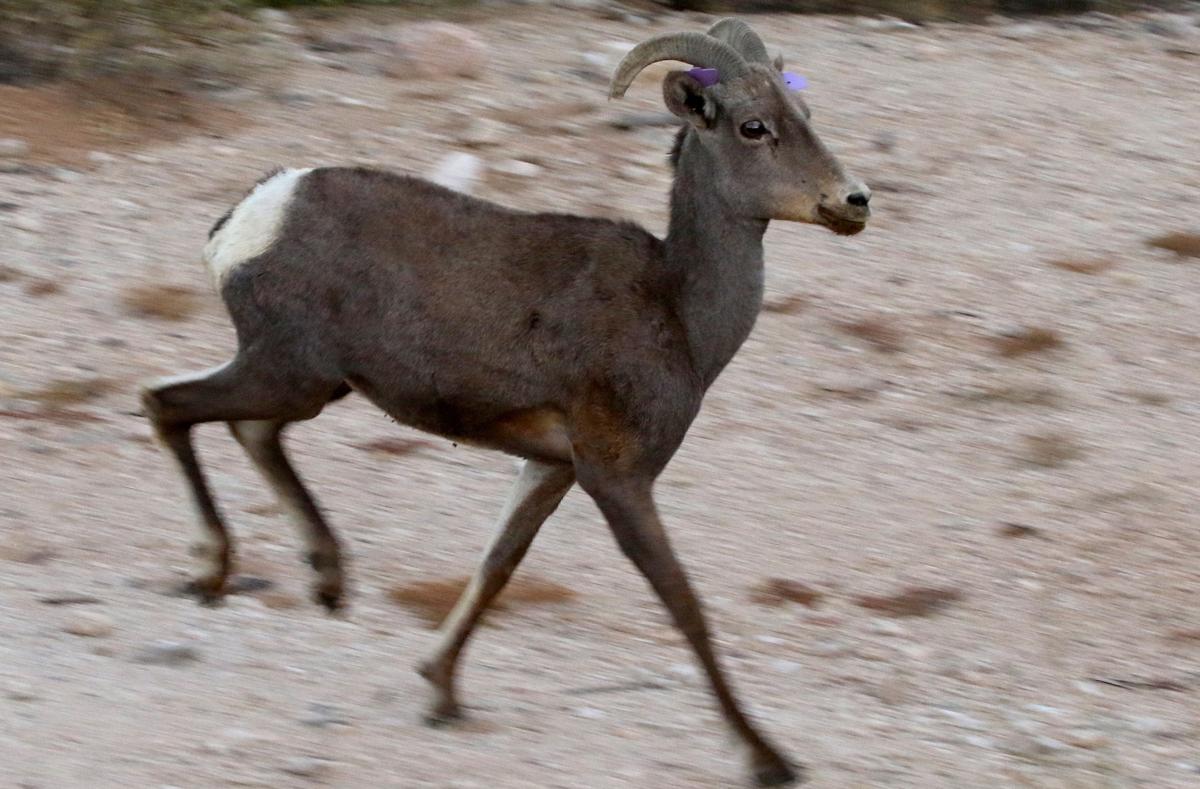With the release of another 20 desert bighorn sheep into the Santa Catalina Mountains north of Tucson in November, the first phase of this innovative wildlife reintroduction project has reached a successful conclusion.
Last month’s translocation was the fourth since the project was launched in November 2013 — and for the time being, it will be the last. Now patience will be needed as wildlife professionals monitor annual population trends in the Catalinas and analyze reams of data gathered over the course of the reintroduction.
So far the signs are good. The population has reached a sustainable level, individuals are exhibiting the social cohesion that’s important to their success, and lamb survival has been good. Clearly the Catalinas provide plenty of food and other resources that bighorn need.
Also, the Arizona Game and Fish Department has announced it will stop pursuing mountain lions that prey on bighorn sheep in the Catalinas. This welcome news comes a year earlier than originally planned, as the bighorn have reached numbers that should withstand normal predation. It marks the realization of one of the fundamental goals of this project: restoring a bighorn population that coexists in a natural relationship with predators.
As always, though, there’s no guarantee when it comes to long-term success for bighorn sheep. They are vulnerable to a number of threats, including habitat loss and exposure to diseases carried by domestic sheep and goats.
It’s critically important that fire be returned to its proper role in maintaining the habitat and ecological health of the Catalinas. The Forest Service’s FireScape plan can accomplish this; we encourage its swift implementation.
Equally important is that domestic sheep and goats be kept away from the bighorn reintroduction area. These animals can infect bighorn sheep with deadly diseases through direct and indirect contact.
Other ways Tucsonans can support our bighorn are by keeping dogs out of the reintroduction area and staying on designated trails when hiking there. Sheep are very sensitive to disturbance on their home turf, especially during lambing season in the first few months of the year.
Judging from the overwhelmingly positive reaction this project has received, we have faith that Tucsonans will do the right thing. The reintroduction benefited from the expertise of some of the best bighorn sheep scientists in the world, but it would not have been possible without strong public support. Thousands of private citizens have volunteered time and/or provided financial support to this project. No tax dollars were spent to achieve this success; it was funded entirely by private donations and monies generated through the sale of hunting equipment and licenses.
The Catalina Bighorn Advisory Committee extends a hearty “Thank you!” to everyone who supported the project, but in particular to the stalwart volunteers who spent thousands of hours to help monitor the bighorn on a daily basis over the past three years. This project was truly a grand collaboration of diverse interests, uniting sportsmen, conservationists and government agencies in pursuit of a common goal.
This success story needs to be placed in context. All over the world, many species of wildlife are losing ground. Bighorn sheep almost disappeared from the Western United States during the 20th century, when their numbers crashed by 99 percent. But in recent decades, bighorn reintroduction projects have contributed to a dramatic recovery.
We urge you to visit the trails of the Pusch Ridge Wilderness Area and bring your binoculars so you can experience the thrill of seeing these iconic animals standing strong on a high ridgeline.
Bighorn sheep are part of our natural heritage, and we Tucsonans should be proud to see them restored to their rightful place .





